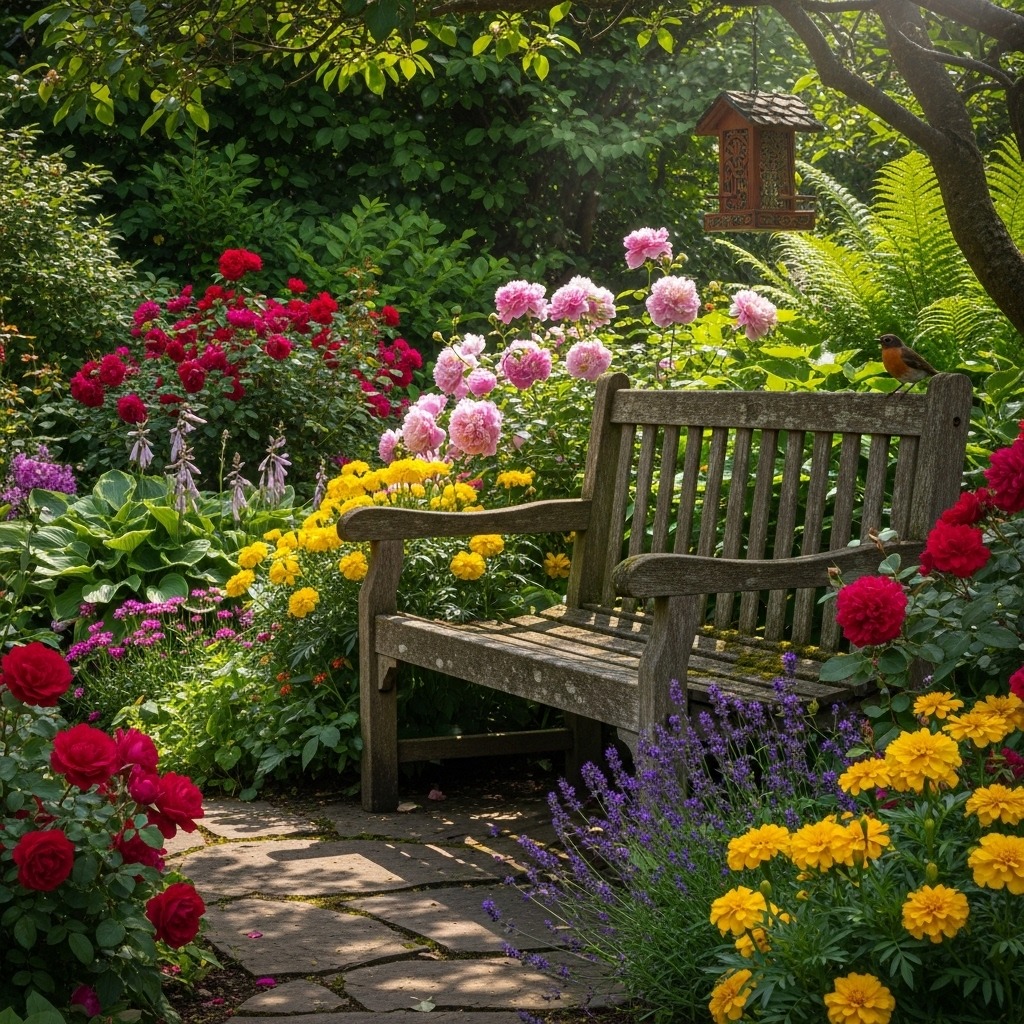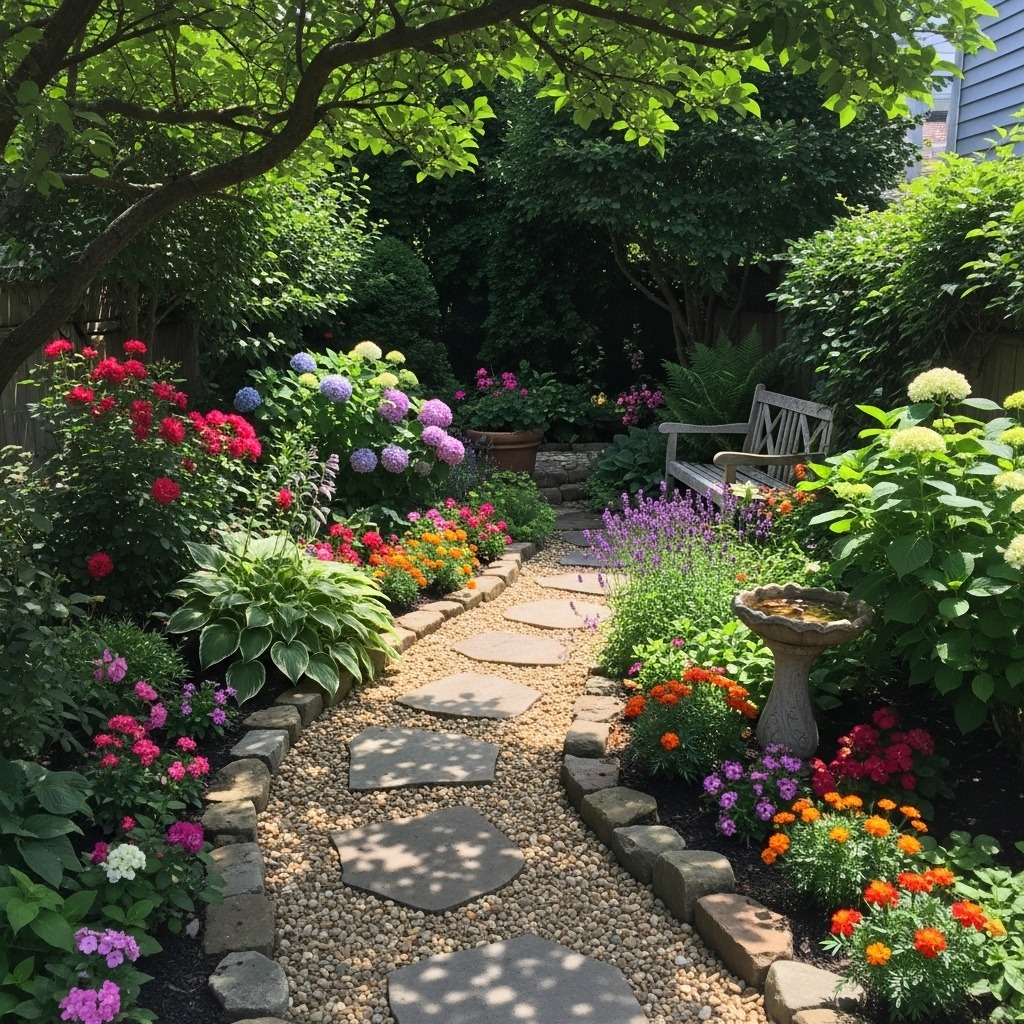Designing a veggie garden layout is one of the most exciting parts of starting a home garden.
Whether you have a spacious backyard or a small urban plot, the way you organize your vegetables will make a significant difference in growth, productivity, and even the enjoyment of your gardening experience.
A thoughtful layout helps maximize space, improve plant health, reduce pests, and give you an abundant harvest throughout the season.
In this guide, we’ll walk through the best veggie garden layout ideas, tips, and design methods to help you build the garden of your dreams.
You can check: Fall Planting Vegetables Ideas
Why a Veggie Garden Layout Matters
Many new gardeners plant vegetables wherever they find space, only to realize later that overcrowding, poor sunlight, or difficult maintenance hurts their yields.
A well-planned garden layout ensures that:
-
Plants get the right amount of sunlight and water.
-
Companion planting helps deter pests naturally.
-
You can easily access your beds for weeding and harvesting.
-
Succession planting provides food all season long.
-
Space is maximized, even in smaller yards.
Step 1: Choose the Right Location
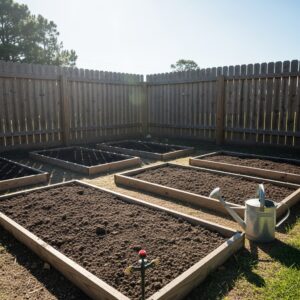
The foundation of a successful veggie garden layout is location. Most vegetables need 6–8 hours of direct sunlight daily.
Pick a spot that:
-
Has level ground with good drainage.
-
Is close to a water source.
-
Is protected from strong winds (using fences or hedges if necessary).
If your yard is shady, consider raised beds or container gardens in the sunniest spots.
Step 2: Plan the Bed Structure
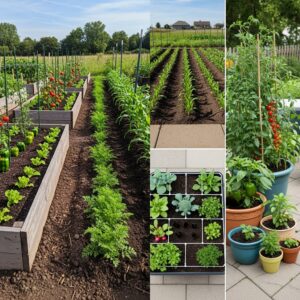
Decide how you want to organize your garden space. Common options include:
-
Raised Beds – Great for small spaces, improve drainage, and make maintenance easier.
-
In-Ground Rows – Perfect for large gardens with plenty of space.
-
Square-Foot Gardening – Divides a bed into grids for high-yield planting.
-
Container Gardens – Ideal for patios, balconies, or renters.
Tip: Raised beds 3–4 feet wide are easiest to manage since you can reach the center without stepping on the soil.
Step 3: Arrange Plants by Height and Sunlight Needs
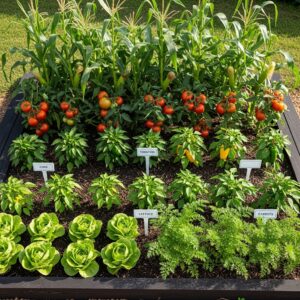
A smart veggie garden layout places taller plants like corn, pole beans, and tomatoes at the back (north side) so they don’t shade shorter crops.
Medium-height plants like peppers and eggplants go in the middle, while low-growing veggies like lettuce, carrots, and radishes stay at the front.
This layered approach ensures that every plant gets enough sunlight.
Step 4: Use Companion Planting
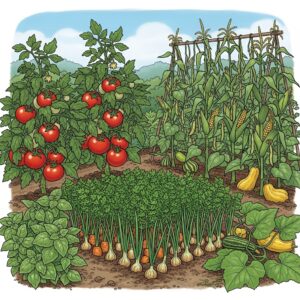
Companion planting is a natural way to boost growth and deter pests. For example:
-
Tomatoes + Basil: Basil repels pests and enhances tomato flavor.
-
Carrots + Onions: Onions deter carrot flies.
-
Corn + Beans + Squash (The Three Sisters): Beans fix nitrogen, corn provides support, and squash shades the soil.
When planning your garden layout, keep these beneficial pairings together and avoid planting incompatible crops, such as onions near peas and beans.
Step 5: Think About Crop Rotation

Planting the same vegetables in the same spot year after year depletes soil nutrients and attracts pests.
Rotate crops annually by grouping plants into families (like nightshades, legumes, brassicas, etc.) and moving them to different beds each season.
Step 6: Pathways and Accessibility
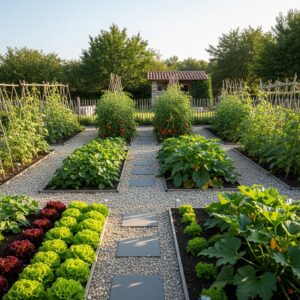
Don’t forget to include walking paths in your veggie garden layout. Paths prevent soil compaction and make it easier to harvest and maintain crops.
Use mulch, gravel, or stepping stones for neat and low-maintenance pathways.
Step 7: Succession and Seasonal Planting
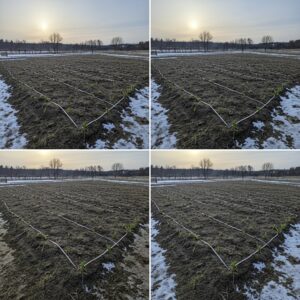
Maximize your harvest by planning for succession planting. For example:
-
After harvesting spring lettuce, plant summer beans in the same spot.
-
Follow summer crops with cool-weather fall vegetables like kale, carrots, or broccoli.
This keeps your garden productive year-round.
Sample Veggie Garden Layout Ideas
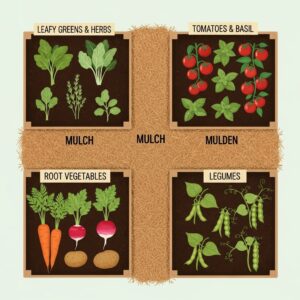
1. 4-Bed Raised Garden
-
Bed 1: Leafy greens and herbs.
-
Bed 2: Tomatoes, peppers, and basil.
-
Bed 3: Root vegetables like carrots, onions, and radishes.
-
Bed 4: Legumes (beans, peas) to enrich soil.
2. Small Balcony Layout
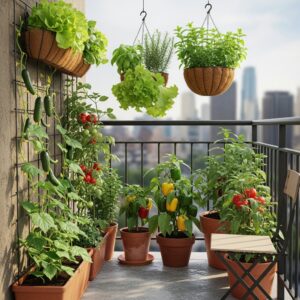
-
Vertical trellises for tomatoes and cucumbers.
-
Hanging baskets for lettuce and herbs.
-
Containers for peppers and dwarf beans.
3. Family-Sized Plot (20×20 ft)
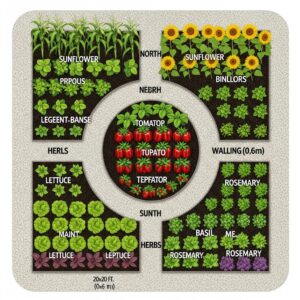
-
North side: Corn, sunflowers, and tall beans.
-
Center: Tomatoes, eggplants, and peppers.
-
South side: Low crops like lettuce, beets, and herbs.
-
Paths dividing each section for easy access.
Read More: Fall Veggies To Plant: A Complete Guide to a Thriving Autumn Garden
Final Tips for a Successful Veggie Garden Layout
-
Test your soil before planting to adjust nutrients.
-
Mulch around plants to retain moisture and suppress weeds.
-
Install a drip irrigation system to save water and reduce disease.
-
Keep a garden journal to track what works best year after year.
Read More: Garden Layout Ideas for a Thriving Vegetable Garden
Conclusion
A thoughtful veggie garden layout not only makes your garden more beautiful but also ensures healthier plants and bigger harvests.
With smart planning—considering sunlight, plant height, companion planting, and crop rotation—you’ll create a thriving garden that feeds your family all season long.
